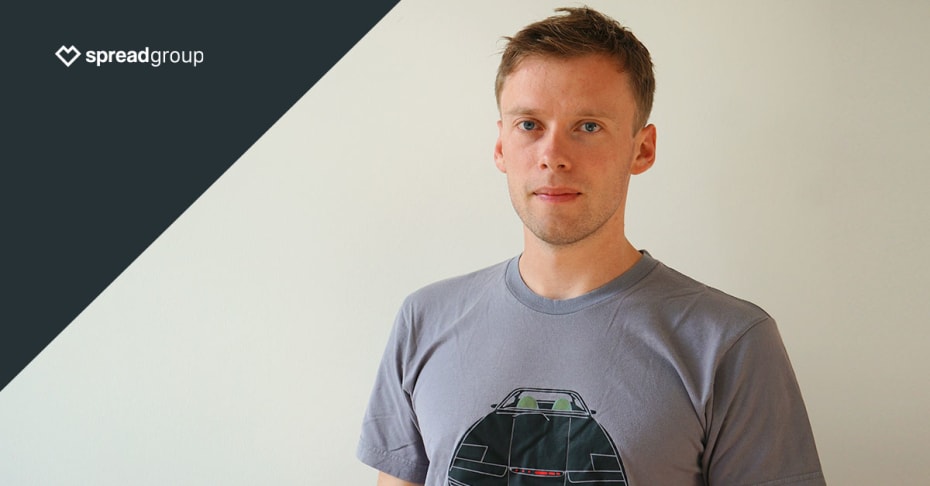Every day, around 25,000 new designs are uploaded to our platforms. The vast majority of them send out positive messages into the world, while supporting an open and fair discourse. Our business model is based on the idea of offering customers an opportunity to create, buy and sell individualized fashion and lifestyle products. The team around Hannes Döring, Director Asset Management, tackles all kinds of design issues within Spread Group. Difficult questions like, “What is acceptable?”, and “How do we define the borders of good taste?” are at the center of their work. We talked to Hannes about the importance of context and the value of a diverse team for design reviews at Spread Group.
Spread Group: You and your team review designs that you consider to be, among other things, violations of our Community Standards. How do you go about it?
Hannes Döring: Suspicious designs are mainly reported to us through our community, usually via our design reporting feature. It helps us draw on country-specific knowledge, as each country has its own laws, symbols and signs that are interpreted and used differently from region to region. These designs are reported by the community and checked by my team. They remain online as long as they are being checked, because – as the presumption of innocence goes – no guilt can be presumed until it has been proved beyond reasonable doubt. As with many other platform applications, we rely on the “many-eyes-principle” as our review standard. Our team constantly familiarizes itself with current political or social issues, and we also proactively conduct platform scans. AI-based and human filters help us remove content from our platforms that e.g. glorifies violence, often within minutes.
Spread Group: Some designs can clearly be identified as a violation of the law, whereas others only offend given a context. How do you deal with this in the team?
Hannes Döring: We constantly educate ourselves and inform ourselves through media and portals, but also through experts such as the Amadeu Antonio Foundation, HateAid and other organizations like Germany’s Kulturbüro Sachsen. As a team, we have regular meetings and discuss positions on social controversies. In doing so, it is important to us to leave personal sensitivities or questions of taste aside. The latter is more often the case with designs depicting dark humor.
To give an example, due to the debate on the issue of abortion rights in the USA, we put the topic back on the table, discussed it at length and weighed it up. As a result, we don’t think it contradicts our community standards to be in favor of a ban on abortion. We do, however, believe that expressing a position needs to adhere to a certain form. Explicit photos are not part of freedom of expression here, as these can hurt the feelings of others.
Periodically, we revisit our decisions and check whether they still apply under the current circumstances. An example of this is the word “lateral thinking” (“Querdenken”), which was unobjectionable for a long time until it has been given a direction by a political movement in which our fifth community standard (supporting harmful, misleading content) is clearly violated. However, it is possible that this level of meaning may change again, and we will use the term in a neutral way.
Spread Group: For which topics do you call on external experts?
Hannes Döring: That varies greatly. As a rule, my team approaches me and asks for more in-depth knowledge on topics that are currently being increasingly reported. Recently, for example, we had two multi-day workshops on sexism, and on another occasion on runes and neopaganism.
In the sexism workshop with the Educat Collective, we learned that sexism takes place on four levels: Sexism on a structural, institutional, individual, and media/discursive level. Sexism is often a mixture of these four forms. Using concrete design examples, we immediately transferred what we had learned into our everyday practice: How would we now (re)assess designs? Can we identify them more clearly?
In the second workshop with the Saxony Cultural Office, we discussed concepts such as runes, Teutons and Vikings, and what their appeal is today. In certain reenactment groups, “Germanic” villages and esoteric circles tend to have nationalistic, racist, and ethnic tendencies that like using runic characters. But runes can also be found in different contexts, such as the metal music scene. It always depends on the individual case and the context. With the help of the workshops, we now have a much greater certainty for our design examinations with these subjects.
Spread Group: You’re talking about case-by-case assessment here. Does this mean that you really make your decisions on a case-by-case basis?
Hannes Döring: Let me go back to my earlier example of the right to abortion. As I said, we allow the pro and con sides of these designs on our platforms. However, if the symbolism or choice of images is offensive, these designs must of course be permanently deleted. In such borderline areas, there is no way around having the designs checked again individually by a broad-based, diverse team.
Spread Group: Thank you for the insight into your work, Hannes!
GET IN TOUCH

